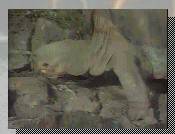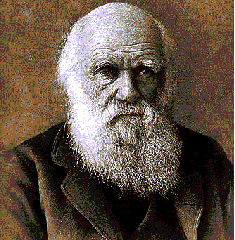
Charles Darwin

Charles Robert Darwin was born in 1809, in Shrewsbury, Shropshire. He was the son of Robert Waring Darwin and his wife Susannah. His grandfather was the scientist Erasmus Darwin.
Charles Darwin was a British naturalist, and the first person to work out a theory explaining how species can evolve. In 1831, at 23 he was invited to join the naval survey ship, the Beagle as geologist and naturalist for a five-year world voyage.
During the journey around South American coast, Darwin studied and took specimens of the plants, animals, and geology of Patagonia, and made observations about the wildlife he encountered. On one day in April, 1832, he collected 68 different species of small beetle from the rainforest surrounding Rio de Janeiro in Brazil. What puzzled Darwin was that there were so many different species of one kind of insect.
Before travelling up the west coast to make a detailed study of the geology of the Andes, and devising a theory of their origin. His observations on coral islands led to his theory of reef formation.
As the Beagle sailed up the pacific coast of South America, Darwin noticed that one type or organism gave way to another, and that the animals he saw were different from those he had seen on the Atlantic coast.
When the South American survey was complete, the Beagle set sail for the Pacific Islands of the Galapagos on 7th September, 1835. Ashore these islands Darwin observed the wildlife similar to the wildlife he'd seen on mainland South America. He noticed differences in detail.


Each
if the Galapagos Islands Darwin visited was inhabited by tortoises, similar to
the mainland species but much larger. The tortoises on each island were slightly
different, so he could tell which island particular tortoises came from. For
example, the tortoises from Isla Isabella (formally known as Albemark) and Isla
Espanola (formally known as Hood). Isla Isabella is well-watered and the
tortoises wallow in the pools. Isla Espanola is arid and here the tortoises
browse on the water-filled stems of cacti and juicy leaves and berries. The
tortoises have different shaped shells. Darwin wondered why the tortoises
were different from island to island. The
mass of data and specimens of plants, animals, and fossils collected from
islands such as the Galapagos strongly influenced his future thinking.
Darwin continually compared living animals with fossil finds, and also compared the differences in species which occurred from place to place. The ultimate result of his experiences, and of his practical knowledge of variation and breeding gained from his own garden plants and animals, was his (now) famous book, On the Origin of Species by Means of Natural Selection, or the Preservation of Favoured Races in the Struggle for Life (1859), (usually referred to simply as 'Origin of Species'.) It showed that species are not fixed but evolve through natural selection. Some individuals have characteristics which better fit them for survival; they are more likely to reproduce and pass their characteristics on to their offspring. Over time distinct species develop. Darwin argued that mankind has evolved in this way.
The book caused great and lasting controversy, which was particularly heated on the question of human evolution. His other works include The Formation of Vegetable Mould through the action of Worms, with observations on their habits (1881) and a monograph on barnacles and The Expression of the Emotions in Man and Animals (1872).
He died in 1882.

The Men who influenced Darwin:
(click on their names to find out more about them)
Rev. Thomas Malthus (natural selection)
Ideas Before Darwin:
Darwin's Ideas
